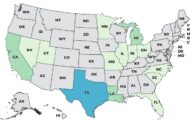Researchers at the UCLA Henry Samueli School of Engineering and Applied Science have developed a cell phone-based E. coli sensor that can detect the bacteria in food and water. The device uses florescent imaging.
The attachment acts like a fluorescent microscope. A sample of the food or water to be tested is pumped into small glass capillaries that are treated with E. coli 0157:H7 antibodies. Battery-powered LEDs then excite the E. coli particles, and emission from quantum dots is seen using the cell phone’s camera and an extra lens. The florescent light emission is quantified, tallying the concentration of the bacteria. It’s a cost-effective attachment.
The device was tested using a buffer solution and milk as a “complex food matrix”. The researchers believe it can be used to test for the presence of other pathogens using different antibodies.
E. coli is a dangerous bacteria that poses a significant threat to public health. Just 10 bacteria can destroy kidneys, cause blood clots, paralysis and respiratory failure.
Photo courtesy of UCLA News Release.




